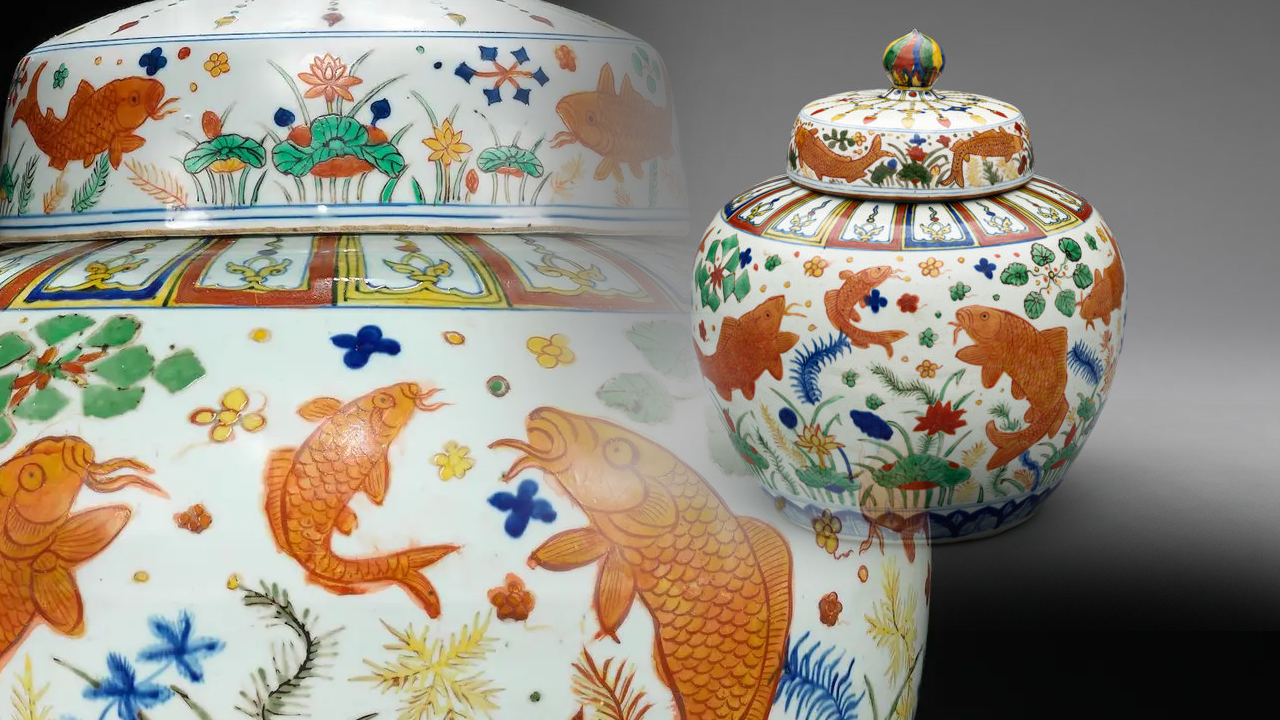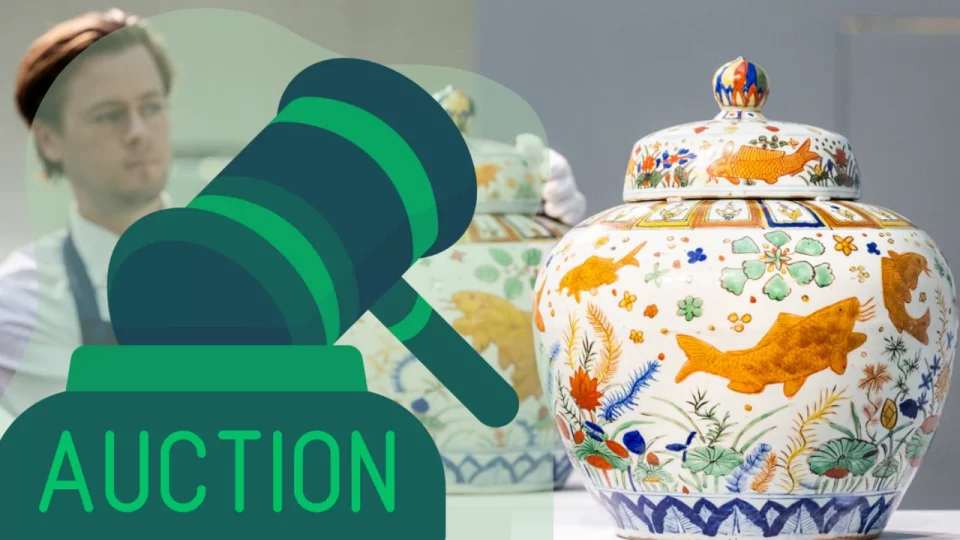In a captivating auction event held by Sotheby’s, a rare and beautifully preserved pair of Ming Dynasty “fish jars” recently shattered all expectations, selling for an astounding $12.5 million. These jars, dating back to the 16th century and originating from the reign of the Jiajing Emperor, were originally estimated to sell for around $1.3 million. The impressive final bid reflects not only the cultural and historical value of these jars but also highlights the enduring fascination with Chinese ceramics.
Table of Contents
The Rarity of Ming Dynasty Fish Jars
Chinese ceramics have long been cherished for their beauty and craftsmanship, but the Ming Dynasty (1368-1644) stands out as a particularly golden era in the history of Chinese porcelain. The Ming Dynasty fish jars that recently sold at Sotheby’s are part of a select group of artifacts associated with the Jiajing Emperor (reigned 1522–1566), known for their detailed, symbolic imagery and advanced porcelain production techniques.
The jars are adorned with golden carp gliding through ponds teeming with lotus and other aquatic plants. This intricate design isn’t just aesthetically pleasing; it reflects the Daoist philosophy that held deep significance for the Jiajing Emperor, who was a devout Daoist. In Daoist symbolism, fish represent freedom and harmony with nature—qualities that resonated with the emperor’s worldview and governance.
Sotheby’s reported that only two pairs of fish jars with their original covers are known to exist, one of which is held by the Musée Guimet in Paris. This particular pair had remained in a German family collection for over a century and narrowly escaped destruction during World War II, adding to the mystique and historical value of the jars. Such rarity, combined with the jars’ pristine condition and rich history, contributed significantly to the bidding frenzy that ultimately led to the final price.
A Symbolic Design Rooted in Daoism
The design of the fish jars goes beyond ornamental value, delving into layers of cultural and philosophical meaning that give them a unique appeal. The Jiajing Emperor’s reign was marked by a revival of Daoist thought, which emphasized harmony with nature and spiritual liberation. Fish, as Daoist symbols, embody a life free from material constraints and worldly struggles. In Chinese culture, they are also associated with abundance and prosperity, making them especially popular motifs in art and architecture.
In the case of the jars, the image of golden carp swimming among lotus flowers evokes a peaceful, balanced existence—an ideal that the Jiajing Emperor aspired to reflect in his rule. The lotus, in Chinese culture, symbolizes purity and enlightenment, adding another layer of spiritual meaning to the jars. This philosophical and symbolic richness enhances their value as cultural artifacts, connecting collectors to a timeless perspective on life and nature.
Ming Dynasty Ceramics: Technological and Artistic Excellence

The Ming Dynasty’s advancements in ceramic production are renowned worldwide. During this era, Chinese artisans perfected the use of blue and white porcelain, as well as various colored glazes. The fish jars from the Jiajing period exemplify these advancements, showcasing complex patterns, vibrant colors, and a quality of craftsmanship that remains unsurpassed. The unique glazes and pigments used in Ming ceramics also contribute to their allure, as the colors retain their vibrancy even after centuries of aging.
Porcelain production during the Ming Dynasty required highly specialized knowledge, from the preparation of clay to the application of glazes and firing techniques. Artisans utilized high-temperature kilns, a sophisticated understanding of mineral pigments, and precision tools to create ceramics that balanced strength with delicate beauty. The Jiajing Emperor’s reign marked a period when these techniques were honed to perfection, producing items of remarkable quality and consistency.
The Cultural and Economic Appeal of Chinese Artifacts
The escalating prices of Chinese ceramics can be traced back to several factors, including the rising wealth in China and an increasing appreciation for cultural heritage among Chinese collectors. As China’s economy grew significantly from the 1990s onward, the country saw a surge in wealthy individuals eager to reclaim and celebrate their nation’s history. The demand for Ming and Qing Dynasty artifacts rose sharply as these individuals sought to acquire symbols of Chinese heritage and identity.
This renewed interest in cultural artifacts extends beyond a desire for beautiful art; it’s a way for collectors to reconnect with their cultural heritage, particularly for those whose families experienced disruptions during periods of political and social upheaval. Owning a piece of history, such as a pair of Ming Dynasty fish jars, represents a tangible connection to the past.
This sentiment resonates beyond China’s borders, drawing interest from collectors and institutions worldwide. Museums in Europe and the United States, as well as private collectors from diverse backgrounds, recognize the cultural and historical significance of these pieces. The growing global fascination with Chinese art reflects an appreciation for the skill and philosophical depth that Chinese artisans brought to their craft.
The Role of Major Auction Houses in Preserving and Promoting Chinese Art
Auction houses like Sotheby’s play a crucial role in connecting collectors with rare artifacts and preserving cultural history. By bringing the Ming Dynasty jars to auction, Sotheby’s provided a platform for global collectors to appreciate and bid on a piece of Chinese history. The auction house’s reputation, combined with a detailed provenance and historical context, contributed to the jars’ appeal and ensured that their value was properly recognized.
Moreover, the auction highlighted the importance of provenance—the documented history of an artifact’s ownership. The jars’ survival through wartime turmoil in Germany, where they were safeguarded by a single family, adds an extraordinary chapter to their story. Provenance not only enhances an artifact’s historical value but also provides assurances of authenticity, making it a vital factor in high-value art transactions.
